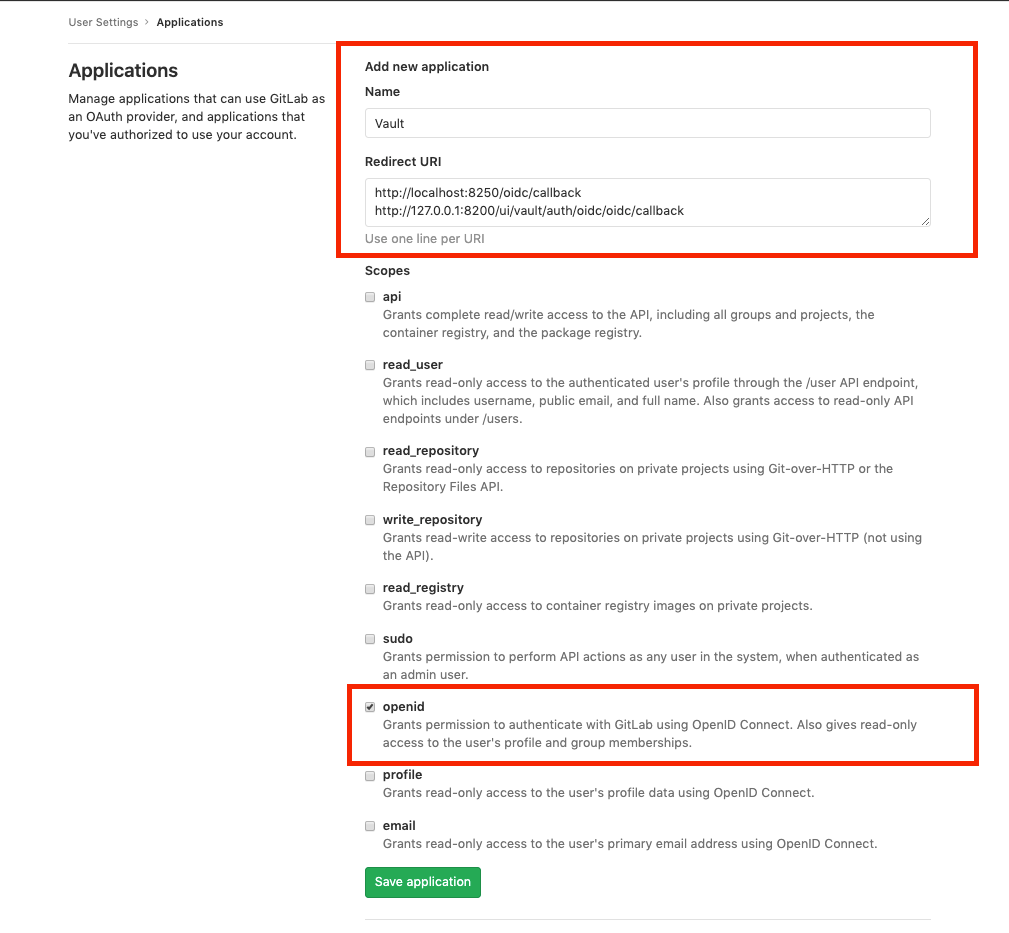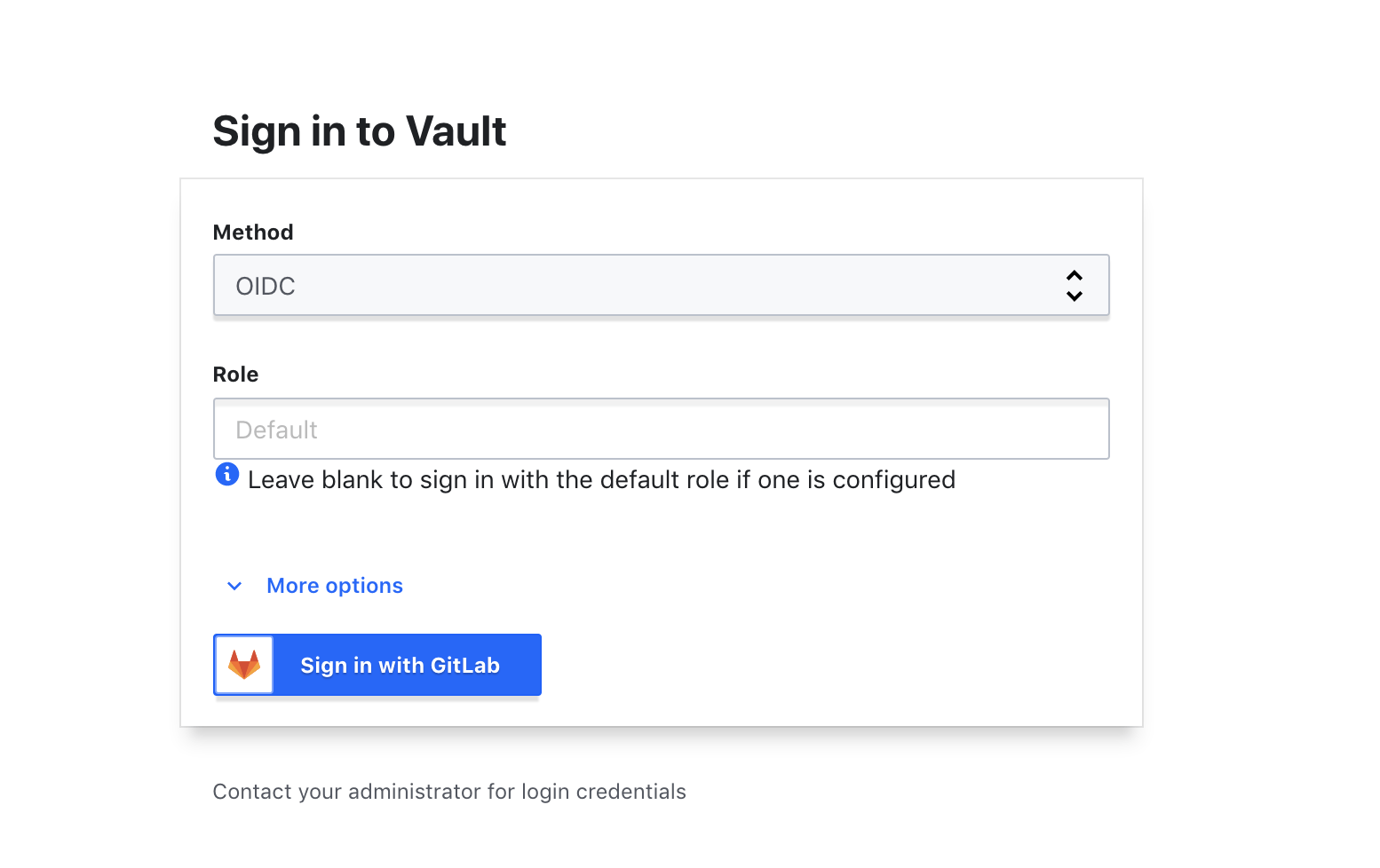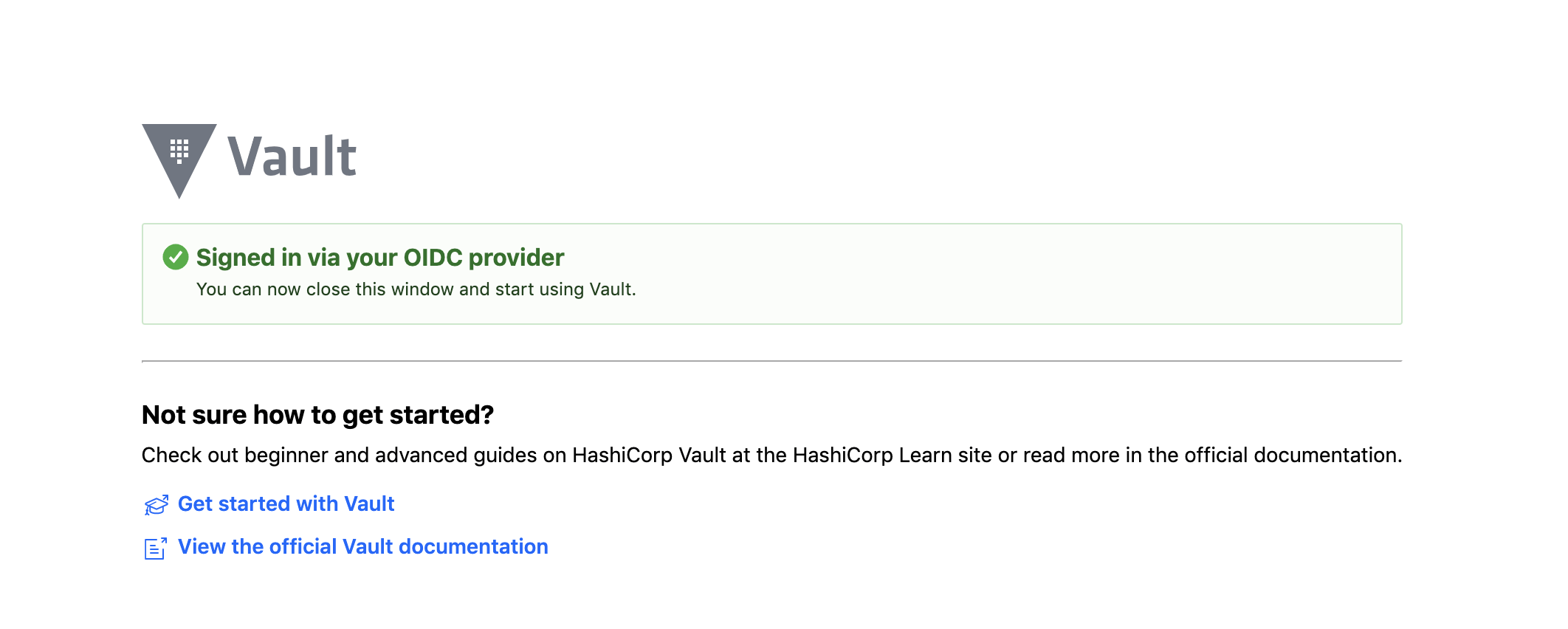Vault Authentication with GitLab OpenID Connect (FREE)
Vault is a secrets management application offered by HashiCorp. It allows you to store and manage sensitive information such as secret environment variables, encryption keys, and authentication tokens.
Vault offers Identity-based Access, which means Vault users can authenticate through several of their preferred cloud providers.
The following content explains how Vault users can authenticate themselves through GitLab by using our OpenID authentication feature.
Prerequisites
- Install Vault.
- Run Vault.
Get the OpenID Connect client ID and secret from GitLab
First you must create a GitLab application to obtain an application ID and secret for authenticating into Vault. To do this, sign in to GitLab and follow these steps:
- In the top-right corner, select your avatar.
- Select Edit profile.
- On the left sidebar, select Applications.
- Fill out the application Name and Redirect URI.
- Select the OpenID scope.
- Select Save application.
- Copy the Client ID and Client Secret, or keep the page open for reference.
Enable OpenID Connect on Vault
OpenID Connect (OIDC) is not enabled in Vault by default.
To enable the OIDC authentication provider in Vault, open a terminal session and run the following command:
vault auth enable oidcYou should see the following output in the terminal:
Success! Enabled oidc auth method at: oidc/Write the OIDC configuration
To give Vault the application ID and secret generated by GitLab and allow Vault to authenticate through GitLab, run the following command in the terminal:
vault write auth/oidc/config \
oidc_discovery_url="https://gitlab.com" \
oidc_client_id="<your_application_id>" \
oidc_client_secret="<your_secret>" \
default_role="demo" \
bound_issuer="localhost"Replace <your_application_id> and <your_secret> with the application ID
and secret generated for your app.
You should see the following output in the terminal:
Success! Data written to: auth/oidc/configWrite the OIDC role configuration
You must tell Vault the Redirect URIs and scopes given to GitLab when you created the application.
Run the following command in the terminal:
vault write auth/oidc/role/demo -<<EOF
{
"user_claim": "sub",
"allowed_redirect_uris": "<your_vault_instance_redirect_uris>",
"bound_audiences": "<your_application_id>",
"oidc_scopes": "<openid>",
"role_type": "oidc",
"policies": "demo",
"ttl": "1h",
"bound_claims": { "groups": ["<yourGroup/yourSubgrup>"] }
}
EOFReplace:
-
<your_vault_instance_redirect_uris>with redirect URIs that match where your Vault instance is running. -
<your_application_id>with the application ID generated for your app.
The oidc_scopes field must include openid.
This configuration is saved under the name of the role you are creating. In this
example, we are creating a demo role.
WARNING:
If you're using a public GitLab instance, such as GitLab.com, you must specify
the bound_claims to allow access only to members of your group or project.
Otherwise, anyone with a public account can access your Vault instance.
Sign in to Vault
-
Go to your Vault UI. For example: http://127.0.0.1:8200/ui/vault/auth?with=oidc.
-
If the
OIDCmethod is not selected, open the dropdown list and select it. -
Select Sign in With GitLab, which opens a modal window:
-
To allow Vault to sign in through GitLab, select Authorize. This redirects you back to your Vault UI as an authenticated user.
Sign in using the Vault CLI (optional)
You can also sign into Vault using the Vault CLI.
-
To sign in with the role configuration you created in the previous example, run the following command in your terminal:
vault login -method=oidc port=8250 role=demoThis command sets:
-
role=demoso Vault knows which configuration we'd like to sign in with. -
-method=oidcto set Vault to use theOIDCsign-in method. -
port=8250to set the port that GitLab should redirect to. This port number must match the port given to GitLab when listing Redirect URIs.
After running this command, you should see a link in the terminal.
-
-
Open this link in a web browser:
You should see in the terminal:
Success! You are now authenticated. The token information displayed below is already stored in the token helper. You do NOT need to run "vault login" again. Future Vault requests will automatically use this token.



